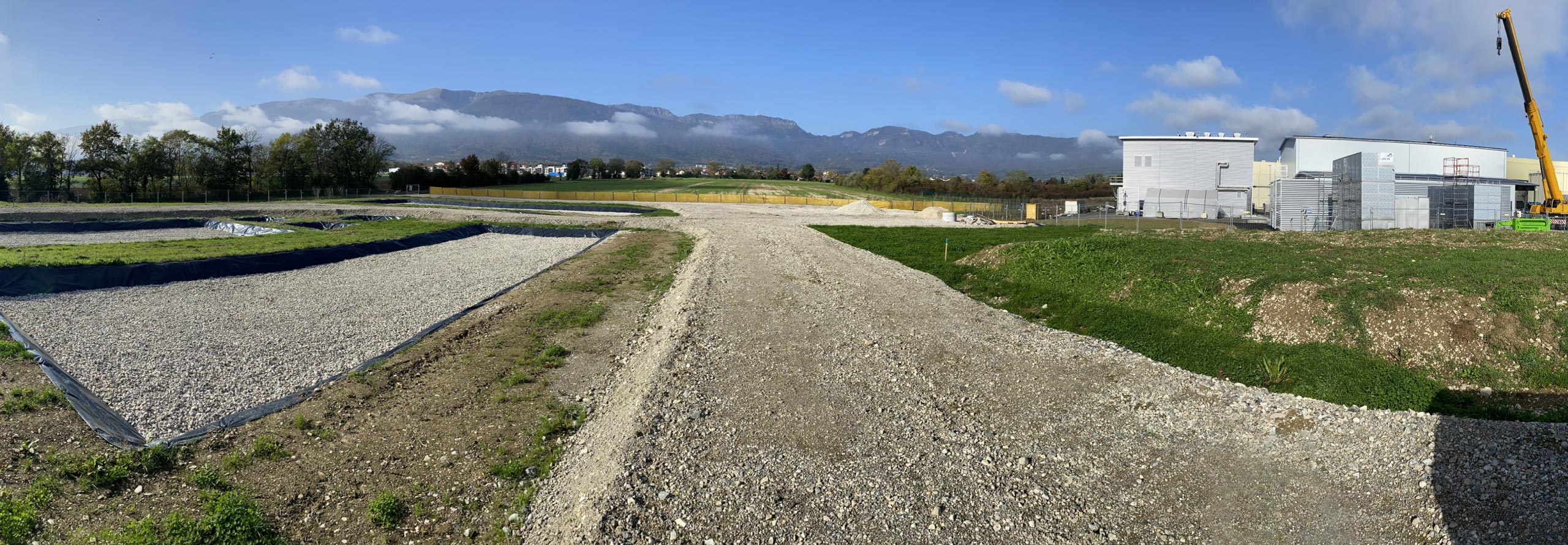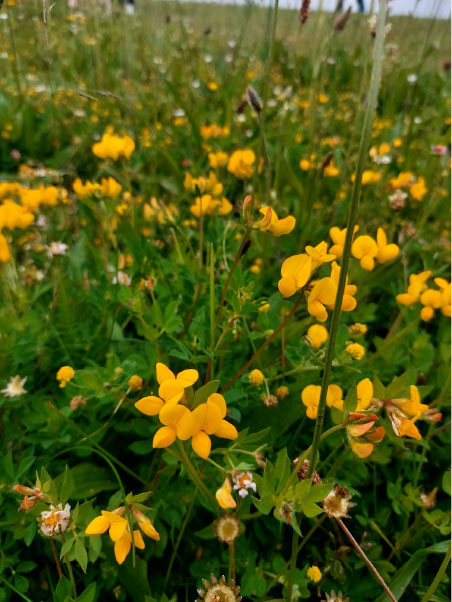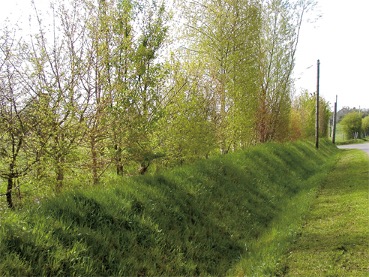
Study Objectives
Pre-treatment and mixing process:
The molasse is formed by a series of horizontal layers of cemented and silty sandstone interspersed with layers of marl and argillaceous rocks. The molasse in the region is generally made up as follows:
- 30 to 50% clay,
- 10 to 15% silt,
- 10 to 15% sand, with a grain size of between 63 μm and 4 mm,
- 15 to 20% sandstone particles larger than 4 mm.
The molasse material was processed through screening, crushing, and sieving to achieve a final particle size below 20 mm. The mixture consisted of two-thirds of a molasse containing a higher content of marls and one-third of molasse with a higher content in sandstone, to optimize substrate texture and account for the natural variability in the chemical and geo-mechanical composition of the molasse. The molasse was then mixed with a low compost quantity, before being installed in the experimental plots. The minimization of the quantity of compost, a precious resource for the agricultural activities in the region, is in line with the requirement of integration of the project into the regional socio-economical activities.
In addition, a novel mixing method is being tested to enhance soil porosity by forming substrate pellets, which could improve root penetration and plant growth. The process aims to create a durable and fertile substrate while optimizing its physical properties.
Soil construction process:
In the OpenSkyLab tests, the soil construction is initiated in a two-step process: creation of a primary and soil structure management. The first step involves characterizing raw materials to create an environment suitable for microbes, plant roots, and soil fauna. The second phase focuses on optimizing organic matter stabilization and pore creation, which are essential for long-term soil productivity. Strategies include using diverse plant species, plants with extensive root systems, perennial plant species and microbial inoculants, while limiting resource input to ensure scalability for larger applications.
Field monitoring and control system:
A field monitoring system “OpenSkyView” was developed to provide a comprehensive overview of the experimental plots, gathering data from various sensors, drone imaging as well as more traditional sampling events. It allows to track soil properties and meteorological data in real-time, and to monitor parameters such as biomass growth, soil moisture, matrix potential, temperature, and evapotranspiration.
Reuse cases:
The substrate mixtures tested in the OpenSkyLab project are designed for large scale applications, suitable for suitable for major construction projects, research infrastructure, or any projects involving significant excavation of molasse materials. These mixtures could be used in the revitalisation of (urban) brownfields, replacement of contaminated soils, for recreational parks in towns or for the vegetation of covers of major roads and transport axes. In addition, the molasse based substrates are tested for trees seedling growth, which could be later used in tree nurseries. The plant species tested in the OpenSkyLab field experiment include climate-resilient varieties that, along with the constructed substrates, could provide important ecosystem services in the future.
Elevated hedgerows:
Hedgerows are rows of trees, shrubs, and plants growing along agricultural field edges, playing a key role in ecological restoration of agroecosystems, contributing to biodiversity and enhancing environmental resilience. Hedgerows allow to create a beneficial microclimate that can prevent flooding and drought, limit soil erosion, buffer extreme temperatures, and help preserve water quality. Additionally, hedgerows serve as effective windbreaks, protecting crops from wind damage and creating a more favorable environment for growth. They also provide long-term habitats for various species, including wild pollinators and natural enemies of common pests, which are crucial for maintaining ecosystem balance, supporting agricultural productivity and the reduction of the use of pesticides.
Plants and shrub species used in the experiment:
Cover crop rotation
Cover crops are cultivated for the improvement of soil properties during the transitional period between two profit crops. When combined with climate-smart farming practices, such as no-tillage, cover crops benefit the agroecosystem through reducing soil erosion, increasing carbon inputs into soil and enhancing the yield of subsequent crops.
In the OpenSkyLab experiments, a rotation consisting of cover crop mixtures will be used to test whether this management system can fasten the process of soil structure generation relative to perennial cultures, such as Miscanthus, Kernza and pasture vegetation.
Miscanthus x giganteus
Miscanthus x giganteus (Poaceae) is a perennial plant species native to East Asia. This crop, which has acultivation cycle of approximately 15-20 years, has been cultivated in Europe since the 1980s as a bioeconomy crop. It offers various pathways for biomass utilization and has the potential to generate additional income for farmers.
In the OpenSkyLab experiments, Miscanthus is used as culture that requires low management input and has the potential to improve soil structure over its perennial cultivation cycle. The culture yield will be assessed to estimate its potential contribution to local value chains, such as fiber or biomass production.
Kernza
Perennial intermediate wheatgrass (Thinopyrum intermedium) has its evolutionary origins in the Iranian High Plateau and has been domesticated since 1983 by the research organization Land Institute in Salina, Kansas, USA) which commercialized the cultivar under the name Kernza®. Kernza is a dual-use crop allowing for grain harvest in summer and forage harvest in spring or fall, providing farmers with additional flexibility and multiple income streams. However, Kernza is still considered a niche crop with significant potential for regenerative farming practices.
In the OpenSkyLab experiments, the yield potential of Kernza on constructed soils will be assessed, as well as the capacity to structure soil and enhance soil organic matter accumulation.



